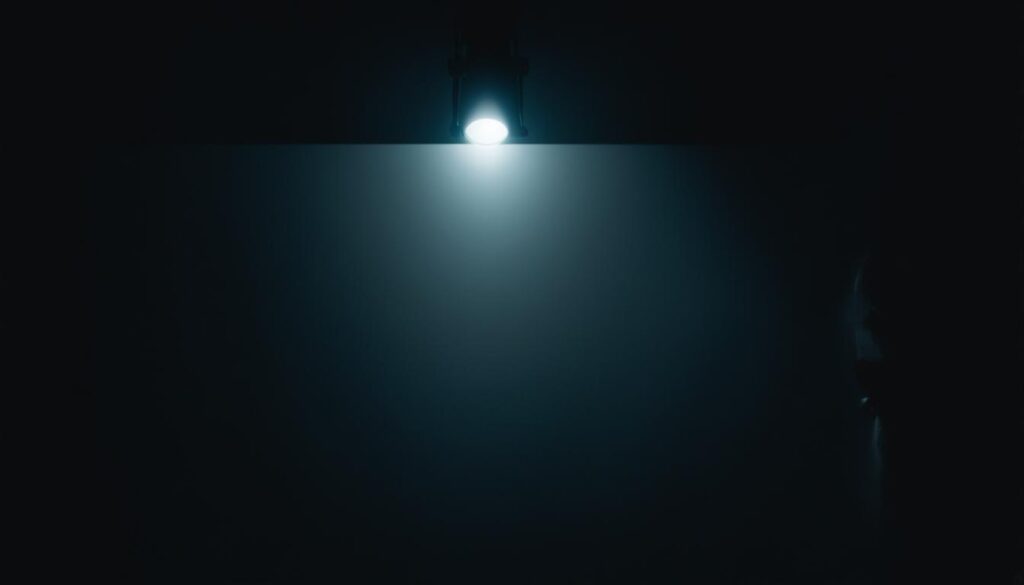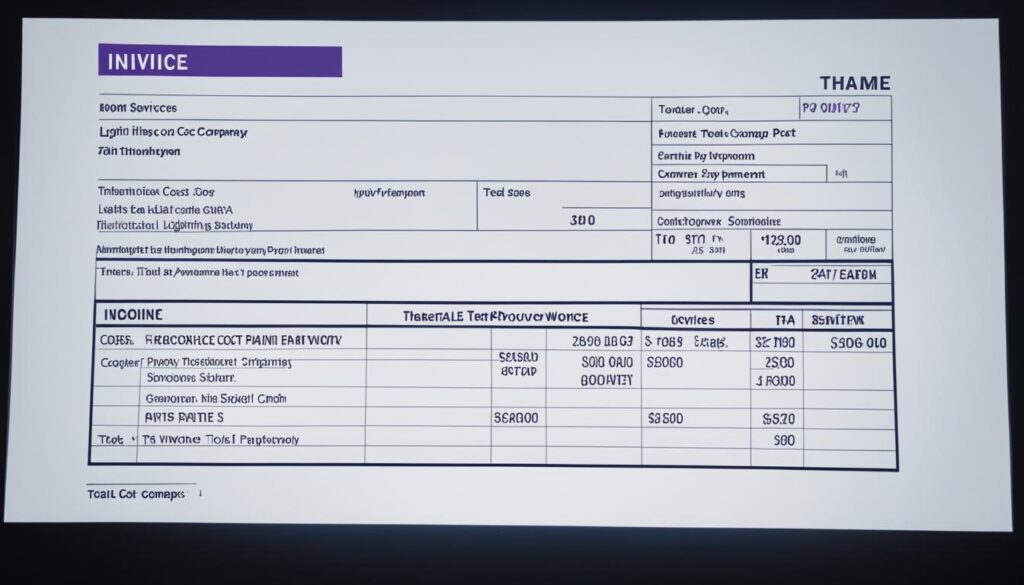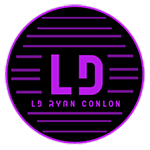Are you a freelance stage lighting technician looking for ways to streamline your billing process? Look no further! In this article, we will provide you with valuable tips and solutions for efficient freelance stage lighting tech billing. From managing your expenses to invoicing clients, we’ve got you covered.
If you want to ensure prompt payment for your services and maintain a healthy cash flow, it’s crucial to implement effective billing practices. We will guide you through the process of creating professional invoices, choosing the right billing software, and understanding industry standards for rates. With these freelance billing solutions, you’ll be able to focus on what you do best – creating stunning lighting designs.
Don’t let the administrative side of your freelance career hold you back. Let’s dive in and discover the secrets to successful freelance stage lighting tech billing!
Getting Started as a Freelance Lighting Designer
Are you passionate about stage lighting and ready to embark on a career as a freelance lighting designer? There are various paths you can take to get started in this exciting field. Whether you choose to join a stagehand union, work for an A/V company, volunteer at local theaters or churches, or find employment with a production company, the possibilities are endless.
However, it’s important to not only have the desire but also the necessary qualifications and skills to succeed as a freelance lighting designer. Let’s explore the qualifications and skills needed to thrive in this creative and technical role.
Qualifications for Freelance Lighting Designers
To establish yourself as a professional freelance lighting designer, certain qualifications can set you apart from the competition. These include:
- Formal education or training in lighting design, theater production, or a related field
- Relevant certifications, such as those offered by industry organizations like the International Association of Lighting Designers (IALD)
- A strong portfolio showcasing your previous lighting design work
- Experience working with lighting equipment, control systems, and programming software
Skills for Freelance Lighting Designers
Alongside qualifications, specific skills are crucial for success as a freelance lighting designer. These skills include:
- Technical Knowledge: A thorough understanding of lighting fixtures, control systems, and programming software
- Creativity: The ability to innovate and create unique lighting designs that enhance the overall aesthetic and atmosphere of a production
- Problem-Solving: The capability to troubleshoot and resolve any technical issues that may arise during a live event
- Collaboration: Effective communication and teamwork skills to collaborate with directors, producers, and other members of the production team
- Flexibility: The capacity to adapt to different venues, client preferences, and changing project requirements
- Attention to Detail: The ability to meticulously plan and execute lighting designs with precision
Developing these qualifications and skills is crucial for freelance lighting designers looking to establish themselves in the industry.
As a freelance lighting designer, building trust and credibility with clients is paramount. By delivering exceptional work, maintaining professionalism, and demonstrating a strong work ethic, you can establish a positive reputation in the industry. Satisfied clients are more likely to refer you to others and provide you with repeat business, ultimately leading to more opportunities and higher-paying projects.
Remember, starting a career as a freelance lighting designer requires a combination of qualifications, skills, and a client-focused mindset. By continuously honing your craft and consistently delivering outstanding results, you can thrive in this dynamic and rewarding profession.
Understanding the Role of a Freelance Lighting Designer
A freelance lighting designer plays a crucial role in various events, including concerts, corporate meetings, TV shows, worship services, and theater productions. Their expertise in lighting design enhances the overall atmosphere and mood of the event. Depending on the scale of the show, the responsibilities of a lighting designer may vary.
In smaller productions, the lighting designer is responsible for creating the lighting plot, which involves deciding the placement and intensity of lights to achieve the desired effect. They are also involved in hanging and wiring the lights, programming the lighting controller to cue the different lighting effects, and operating the show during the performance. After the event, the lighting designer is usually responsible for dismantling the lights.
In larger productions, the role of a lighting designer may be divided among multiple individuals. For example, an associate lighting designer may assist the main lighting designer in designing the lighting plot, while other technicians handle the technical aspects of hanging, wiring, and programming the lights. This division of tasks allows for more efficient and seamless execution of the lighting design.
A freelance lighting designer brings creativity, technical expertise, and attention to detail to their role. They work closely with other production team members, such as directors, set designers, and stage managers, to create a cohesive visual experience for the audience.
Duties of a Freelance Lighting Designer
- Designing the lighting plot to enhance the visual elements of the production
- Hanging and wiring lights according to the design
- Programming and operating the lighting controller to execute lighting cues
- Collaborating with other production team members to ensure a cohesive visual experience
- Managing lighting equipment and ensuring its proper maintenance
- Staying updated with the latest lighting design techniques and technologies
| Skills | Description |
|---|---|
| Technical knowledge | Understanding of lighting equipment, software, and programming |
| Creativity | Ability to design lighting that complements the overall production |
| Attention to detail | Paying meticulous attention to lighting cues and timing |
| Communication skills | Effectively collaborating with the production team |
| Problem-solving abilities | Addressing any lighting issues that may arise during the production |
Essential Skills for Freelance Lighting Designers
Freelance lighting designers require a diverse range of skills to excel in their profession. These skills contribute to their ability to deliver exceptional lighting design and create captivating visual experiences.
Effective Communication
Effective communication is a vital skill for freelance lighting designers. It allows them to collaborate effectively with clients, understand their vision, and translate it into a lighting design that meets their expectations. Clear and concise communication with colleagues and crew members ensures smooth execution of the lighting design plan.
Problem-Solving Abilities
Lighting designers must possess strong problem-solving abilities to address any lighting issues that may arise during a production. They need to quickly assess and resolve technical challenges, such as equipment malfunctions, power failures, or last-minute changes to the lighting setup. Their ability to think on their feet and find innovative solutions is crucial for delivering successful lighting designs.
Technical Knowledge
A solid foundation of technical knowledge is essential for freelance lighting designers. They need to be proficient in operating lighting equipment, understanding different lighting fixtures, and using programming software to create dynamic lighting effects. Technical expertise enables designers to maximize the potential of lighting technology and create impactful designs.
Flexibility
Flexibility is a key attribute for freelance lighting designers. They must adapt to different venues, ranging from small theaters to large arenas, and adjust their designs to suit the specific requirements of each space. Additionally, designers need to be flexible in accommodating the preferences and feedback of clients, ensuring their vision is captured in the final lighting design.
Attention to Detail
Attention to detail is crucial for freelance lighting designers as it ensures precise lighting setups and seamless transitions during performances. Designers must meticulously analyze the space, consider the color temperature, brightness, and position of each light fixture, and meticulously align the lights to create the desired atmosphere. By paying close attention to detail, designers can deliver exceptional lighting experiences.
The Importance of Likability and Building Trust
Likability and building trust are crucial aspects of being a successful freelance lighting designer. When clients perceive you as likable and trustworthy, it opens up more job opportunities, as people prefer working with individuals they enjoy being around. Likability and trust go hand in hand, forming the foundation for professional relationships.
To achieve likability, it’s essential to demonstrate professionalism, integrity, and a positive attitude in all your interactions. By maintaining a friendly and approachable demeanor, you create an atmosphere where clients feel comfortable discussing their lighting needs and ideas.
Building trust and credibility is equally important. Clients need assurance that you are skilled and reliable in delivering high-quality lighting designs. Some effective strategies to build trust include:
- Consistently delivering exceptional work:
- Meeting project deadlines:
- Communicating openly and honestly:
- Providing accurate cost estimates and transparent billing:
When clients see your commitment to their vision and satisfaction, they are more likely to trust you with future projects and recommend your services to others.
Finding Companies to Work With as a Freelance Lighting Designer
As a freelance lighting designer, one of the key challenges you may face is finding companies to work with. However, with the right strategies in place, you can discover exciting job opportunities and build a thriving career in the field. Here are some effective ways to connect with potential employers and secure work as a freelance lighting designer.
Researching Companies
Start by conducting thorough research to identify theater production companies and A/V companies in your area. Look for organizations that align with your interests and expertise, as this will increase the chances of finding suitable projects. Take the time to explore their websites, portfolios, and previous productions to get a sense of their style and the type of work they specialize in.
Networking
Networking is a powerful tool for finding work as a freelance lighting designer. Attend industry events, such as trade shows, conferences, and workshops, where you can meet professionals from the theater production and A/V industries. Engage in conversations, exchange business cards, and share information about your skills and experience. Building relationships with industry insiders can lead to job opportunities and collaborations.
Reaching Out
Proactively reach out to theater production companies and A/V companies that you’re interested in working with. Craft a compelling introduction email showcasing your skills and experience. Attach your portfolio or provide links to your past work to demonstrate your capabilities. When contacting companies, personalize your message and highlight how your skills and expertise can contribute to their productions. Additionally, consider utilizing online platforms, such as LinkedIn, to connect with professionals and expand your network.
Building a Professional Network
Building a strong professional network is crucial for freelance lighting designers. Engage with industry professionals through social media groups, forums, and online communities. Share valuable insights, contribute to discussions, and establish yourself as a knowledgeable and reliable expert in the field. Networking not only helps you find job opportunities but also opens doors for potential collaborations and referrals.
By researching companies, networking with industry professionals, and reaching out to theater production companies and A/V companies, you can increase your chances of finding rewarding work as a freelance lighting designer. Building a strong professional network and showcasing your skills and expertise will set you apart from the competition, leading to a steady flow of projects and a successful freelance career.
Setting Your Freelance Lighting Tech Rates
As a freelance lighting designer, determining your rates is a crucial part of the billing process. To ensure fair compensation, it’s important to research industry standards and take into account factors such as your experience, skills, and the scope of each project.
Setting competitive rates requires finding a balance between valuing your expertise and staying within industry norms. By charging rates that reflect the value you provide, you can establish yourself as a professional and attract clients who appreciate your skills.
While negotiating rates with clients may be necessary, it’s important to set a standard and not compromise too much on the value of your services. Aim for fair compensation that aligns with your industry experience and the quality of work you deliver.
Research Industry Standards
To set your rates effectively, start by researching industry standards for freelance lighting designers. Understanding the market rates will give you a benchmark to assess your own value. Look for resources such as industry surveys, professional organizations, or networking with fellow professionals to gain insights into typical rates in your area.
Consider Your Experience and Skills
Take into account your experience and skills when determining your rates. If you have years of experience and a strong portfolio of successful projects, you can justify charging higher rates. However, if you’re just starting out, setting lower rates initially can help you gain experience and build your reputation.
Assess the Scope of the Project
The scope of each project should also influence your rates. Consider factors such as the complexity, size, and duration of the project. Projects with higher demands, longer timelines, or specialized requirements may warrant higher rates.
It’s important to communicate openly with your clients about their specific needs and develop a clear understanding of the project requirements before finalizing your rates.
Value Fair Compensation
When setting your rates, always prioritize fair compensation. While it can be tempting to lower your rates to secure more projects, undervaluing your work may lead to dissatisfaction and burnout in the long run.
Remember that your time, expertise, and the value you bring to each project deserve fair recognition. Setting rates that reflect the industry standards and the value you provide will enable you to sustain your freelance career and attract quality clients.

Negotiate with Confidence
When negotiating rates with clients, it’s important to approach the conversation with confidence. Be prepared to articulate the value you bring to the project and support your rates with your experience and portfolio.
While some negotiation may be necessary to reach a mutually beneficial agreement, avoid compromising too much on the value of your services. Stick to rates that reflect fair compensation for your expertise and the quality of your work.
By setting your freelance lighting tech rates thoughtfully and prioritizing fair compensation, you can establish yourself as a professional in the industry and attract clients who value your skills and experience.
The Evolution of Lighting Tech Rates Over Time
The rates for lighting techs have undergone significant changes throughout history, reflecting various economic and industry-related factors. These rates have evolved in response to factors such as inflation, the demands of the industry, and the labor market. By examining historical data from renowned sources like Howard Shenson’s book “The Contract and Fee-Setting Guide for Consultants and Professionals” and James Moody’s book “Concert Lighting: Techniques, Art, and Business,” we can gain valuable insights into the evolution of lighting tech rates and fee structures.
Historical Lighting Tech Rates Comparison
| Decade | Average Lighting Tech Rate |
|---|---|
| 1980s | $50 per hour |
| 1990s | $75 per hour |
| 2000s | $100 per hour |
| 2010s | $125 per hour |
The table above showcases the average lighting tech rates in different decades, providing a comparison of how rates have changed over time. Please note that these rates are approximate and may vary depending on the region, level of experience, and specific project requirements.
It is important for lighting techs to stay informed about the historical trends and industry standards in order to effectively set their rates. Understanding the historical context of lighting tech rates allows professionals to make informed decisions when negotiating with clients and pricing their services accurately.
By keeping up with current industry trends and continuously assessing their own skills and expertise, lighting techs can ensure that their rates align with the value they provide. It is critical to strike a balance between fair compensation and remaining competitive within the market.
The Importance of Professional Invoicing for Theatre Companies
Invoicing is a vital aspect of running a theatre company. It not only helps to manage cash flow but also contributes to maintaining a professional image. Theatre companies rely on accurate invoicing practices to record transactions, request payment from clients, and provide transparency in terms of costs and services rendered. Well-designed and accurate invoices build trust with clients and ensure timely payments, allowing for smooth financial planning and budgeting.
One of the key benefits of professional invoicing is the ability to manage cash flow effectively. By issuing timely and accurate invoices, theatre companies can monitor their income and expenses, enabling them to plan for upcoming productions, allocate resources, and make informed financial decisions. This level of financial control is essential for the sustainability and growth of theatre businesses.
Furthermore, professional invoicing contributes to maintaining a positive and credible image for theatre companies. By delivering well-designed and comprehensive invoices, theatre companies demonstrate professionalism, attention to detail, and a commitment to transparency. This enhances the overall perception of the company and instills confidence in clients, promoting long-term relationships and repeat business.
Accurate invoicing also plays a significant role in fostering transparency in financial transactions. Theatre companies provide detailed invoices that outline the breakdown of costs, itemizing the services provided. This level of transparency ensures that clients have a clear understanding of the charges and the value they are receiving. It eliminates ambiguity and reduces the chances of disputes or misunderstandings regarding billing.
To illustrate the importance of professional invoicing for theatre companies, let’s take a look at the following example:
| Benefits of Professional Invoicing for Theatre Companies |
|---|
| 1. Efficient cash flow management |
| 2. Maintaining a professional image |
| 3. Transparency in financial transactions |
In conclusion, professional invoicing is essential for theatre companies to effectively manage cash flow, maintain a professional image, and provide transparency in financial transactions. By implementing accurate and transparent invoicing practices, theatre companies can streamline their billing process, foster trust with clients, and make informed financial decisions for continued success.
Essential Elements of a Theatre Company Invoice
A professional theatre company invoice should include essential components to facilitate efficient billing and ensure smooth transactions. Including these elements in your invoice promotes clear communication, fosters professionalism, and enhances transparency throughout the billing process. The key components of a theatre company invoice are:
- Contact Information: Provide your theatre company’s complete contact details, including your name, address, phone number, and email address. This information allows clients to easily reach out to you with any questions or concerns.
- Invoice Number: Assign a unique invoice number to each invoice for easy tracking and reference. This helps both you and your clients keep track of payments and maintain accurate records.
- Due Date: Specify a due date for payment on your invoice to clearly communicate the deadline to your clients. This ensures timely payments and helps you manage your cash flow effectively.
- Client Information: Include the client’s name, address, and contact details on the invoice. This information ensures that the invoice is addressed to the correct recipient and helps maintain accurate billing records.
- Itemized List: Provide a detailed itemized list of the services or products provided by your theatre company. Break down the charges and include a description, quantity, rate, and subtotal for each item. This helps your clients understand what they are being billed for and promotes transparency.
- Total Amount Due: Clearly state the total amount due on your invoice, including any applicable taxes or discounts. Make sure the amount is prominently displayed and easily visible to your clients.
By including these essential elements in your theatre company invoices, you can ensure clear communication, promote professionalism, and facilitate prompt payment from your clients. Here’s an example of how a well-structured theatre company invoice looks:
Remember, a well-designed and comprehensive theatre company invoice not only helps you get paid promptly but also reflects positively on your professionalism and attention to detail.
Steps to Create a Theatre Company Invoice
Creating a theatre company invoice is a key step in ensuring accurate billing and smooth financial transactions. Follow these steps to create a professional invoice for your theatre company:
- Choose Invoicing Software: Start by selecting invoicing software that suits your needs. Look for software that offers customizable invoice templates, easy-to-use interfaces, and features like automated calculations and invoice tracking.
- Input Necessary Information: Once you’ve chosen your software, input the necessary information into the invoice template. This includes your theatre company’s contact details, such as your business name, address, phone number, and email. Include the invoice number for reference, the date of the invoice, and the due date for payment.
- Add Client Information: Include your client’s contact information, such as their name, organization, address, and email. Ensure this information is accurate to avoid any communication errors.
- Provide an Itemized List: List the services or products provided by your theatre company in detail. Include a description, quantity, unit price, and subtotal for each item. This itemized list helps clients understand the breakdown of costs and provides transparency.
- Review for Accuracy: Before sending the invoice to your client, review it thoroughly for accuracy. Check for any typos, incorrect amounts, or missing information. A well-reviewed invoice helps maintain a professional image and avoids misunderstandings.
- Send the Invoice: Once you’re confident in the accuracy of your invoice, send it to your client. Consider using email or online platforms to ensure prompt delivery. Confirm receipt of the invoice with your client and address any questions or concerns they may have.
By following these steps, you can create a comprehensive and professional theatre company invoice. The accuracy and clarity of your invoices will help maintain transparency, foster trust with your clients, and ensure timely payments.

Conclusion
Proper billing practices and professional invoicing are crucial for freelance stage lighting technicians and theatre companies. By implementing the tips and strategies outlined in this article, freelance lighting techs can streamline their billing process, improve cash flow, and ensure prompt payment for their services. On the other hand, theatre companies can maintain a professional image, manage their finances effectively, and foster positive relationships with clients by adopting accurate and transparent invoicing practices.
Successful billing not only ensures timely payment but also contributes to the overall success of a freelance lighting tech’s career or theatre business. By establishing clear invoicing procedures, adhering to industry standards, and communicating effectively with clients, freelancers can increase their credibility and attract more opportunities. Similarly, theatre companies can build trust with their clients by providing accurate and itemized invoices, leading to better customer satisfaction and repeat business.
Remember, professionalism and transparency in billing practices are key to thriving in the freelance stage lighting tech industry. It is essential to prioritize effective invoicing to maintain a steady cash flow, establish a strong reputation, and pave the way for long-term success.

Ryan Conlon is a highly experienced Corporate Freelance Lighting Designer with two decades of dedicated work in the entertainment industry. With a passion for creating captivating lighting experiences, Ryan has contributed his expertise to numerous corporate meetings, stage productions, concerts, and events throughout his career.
